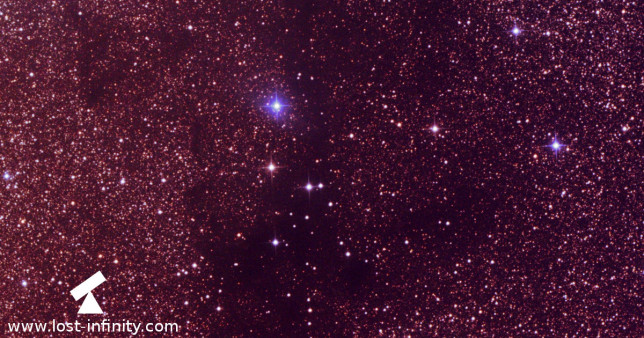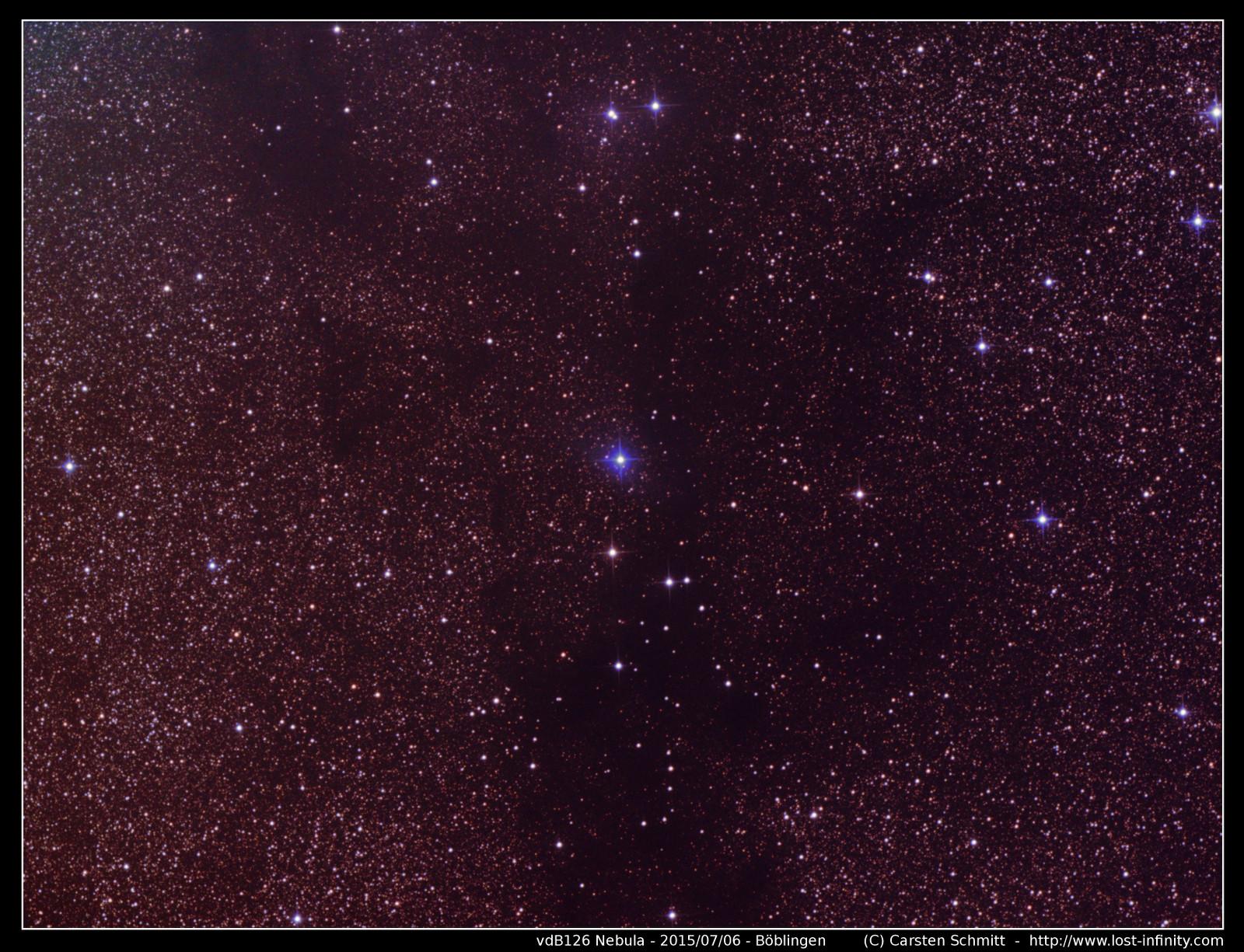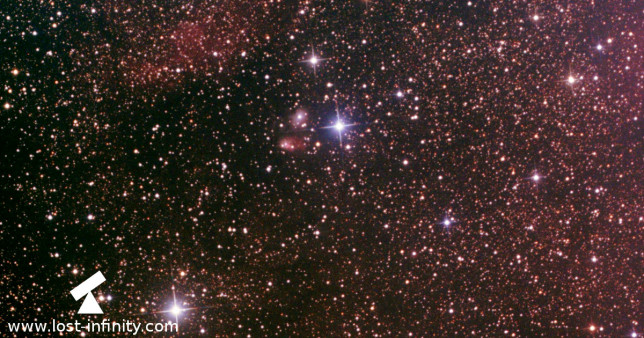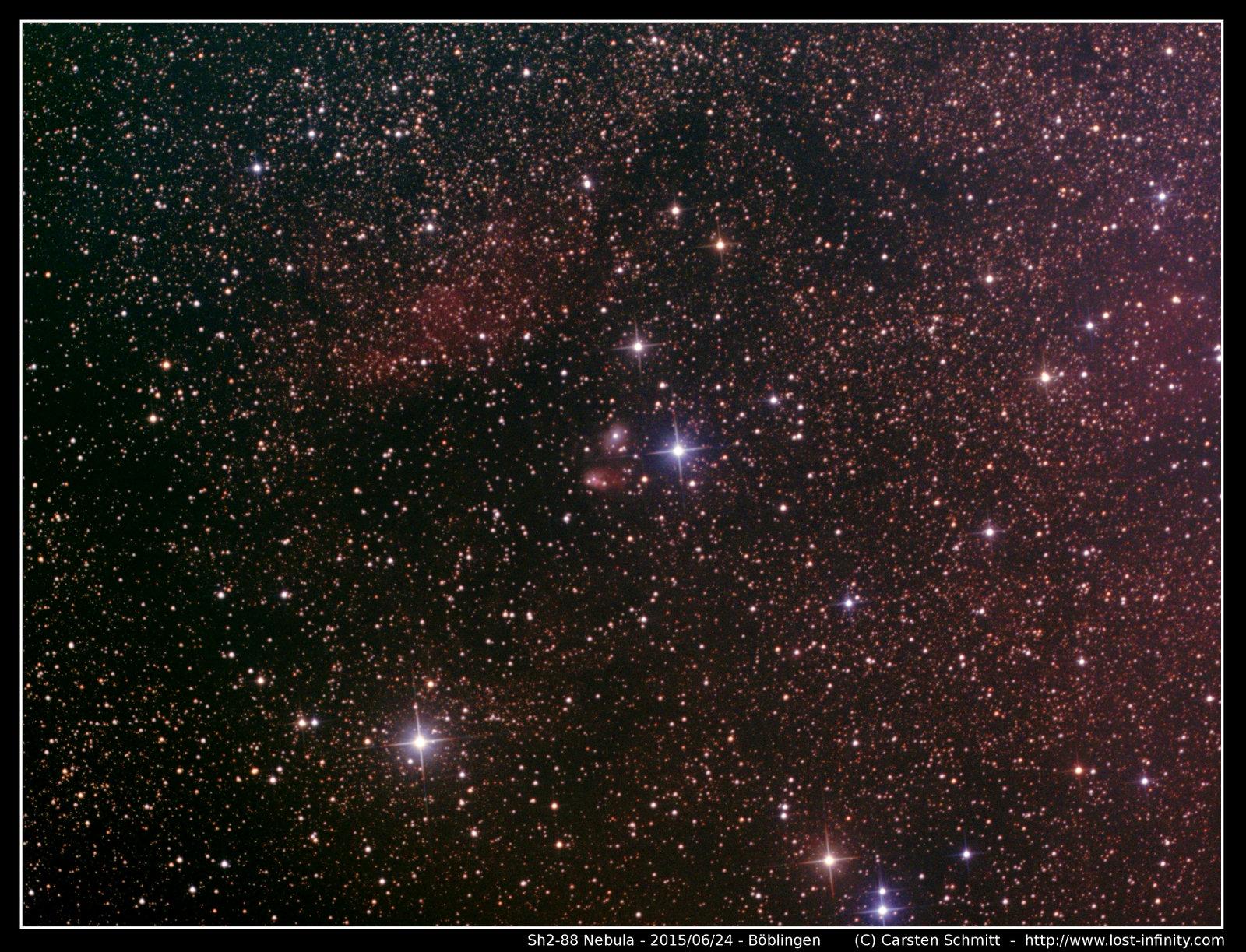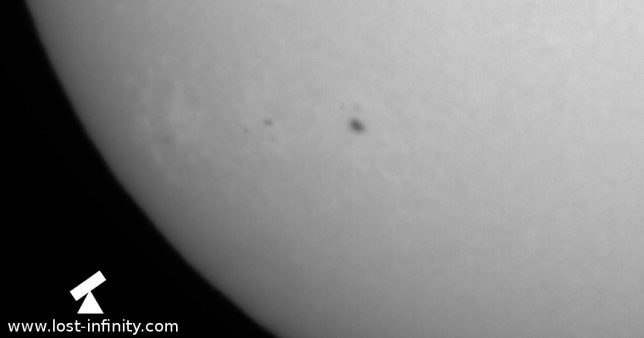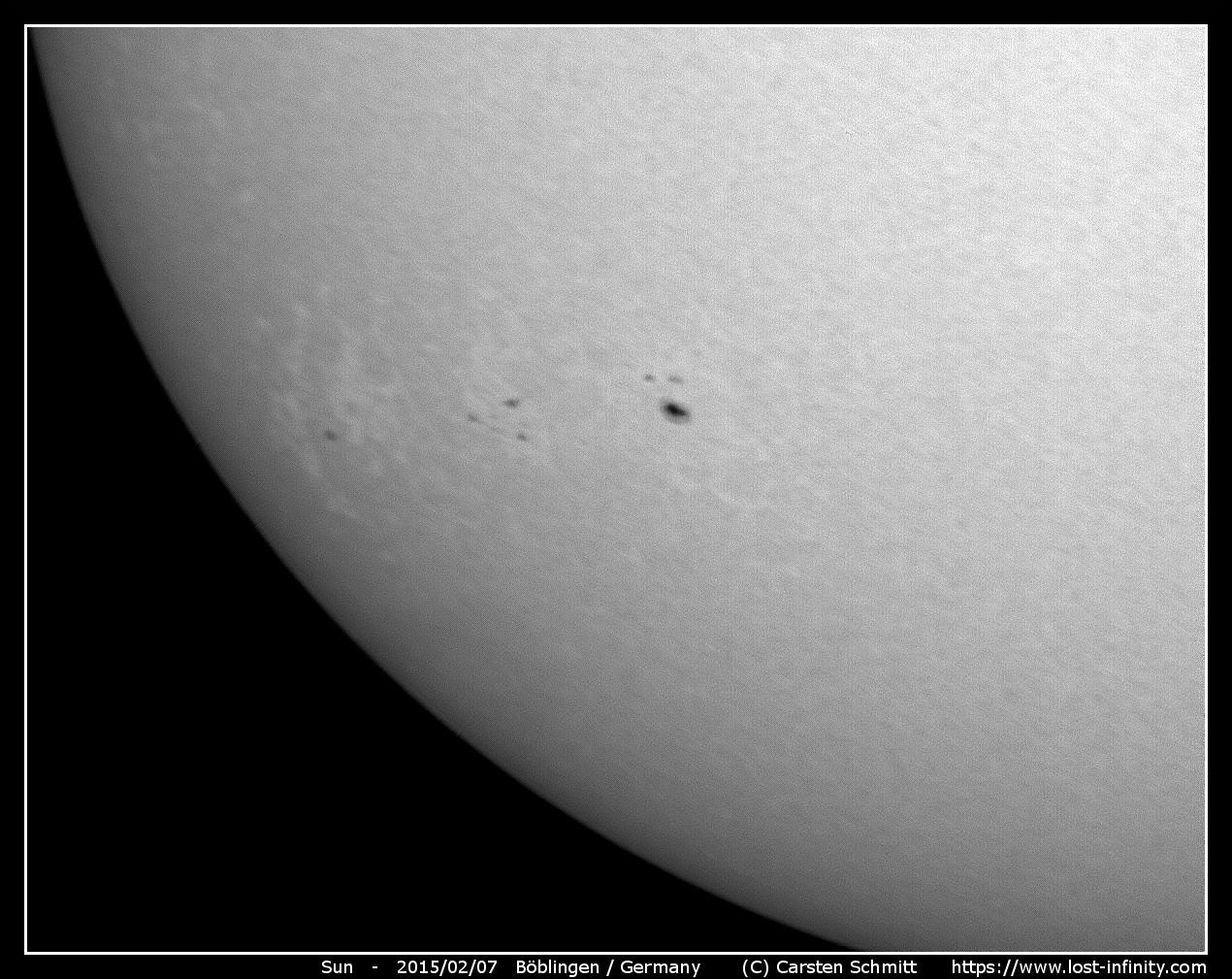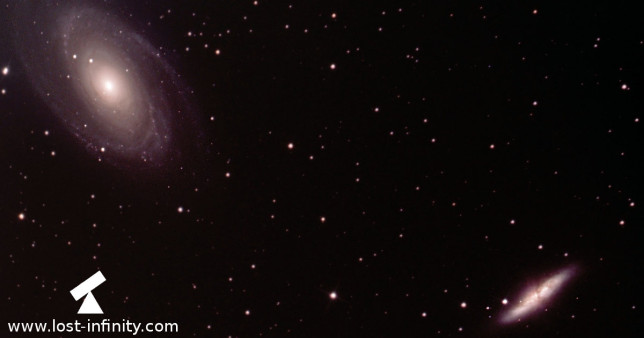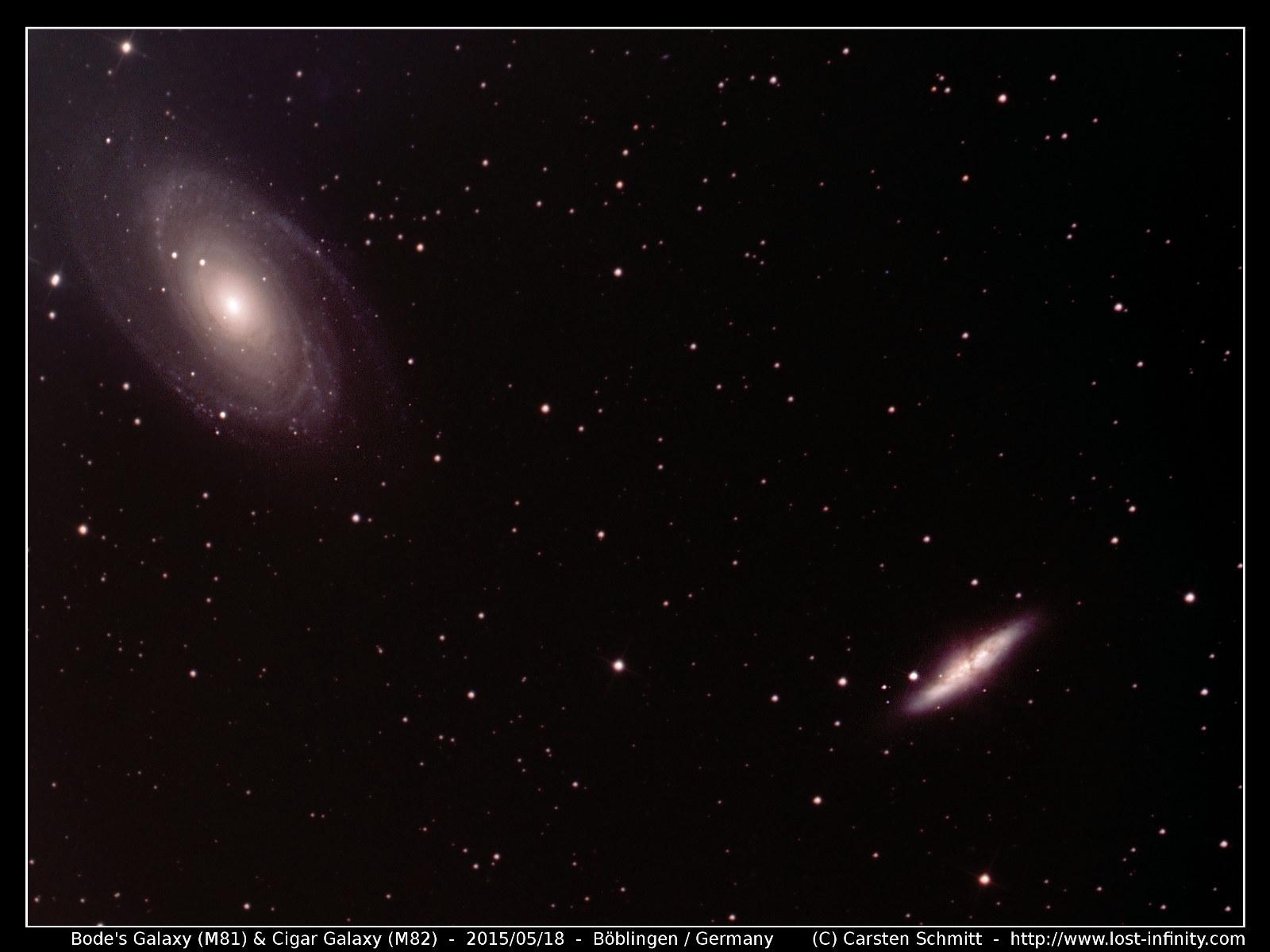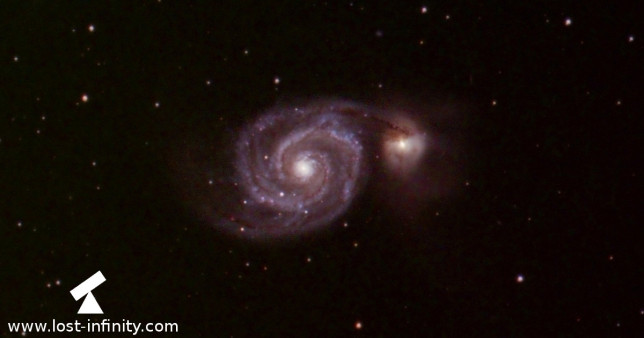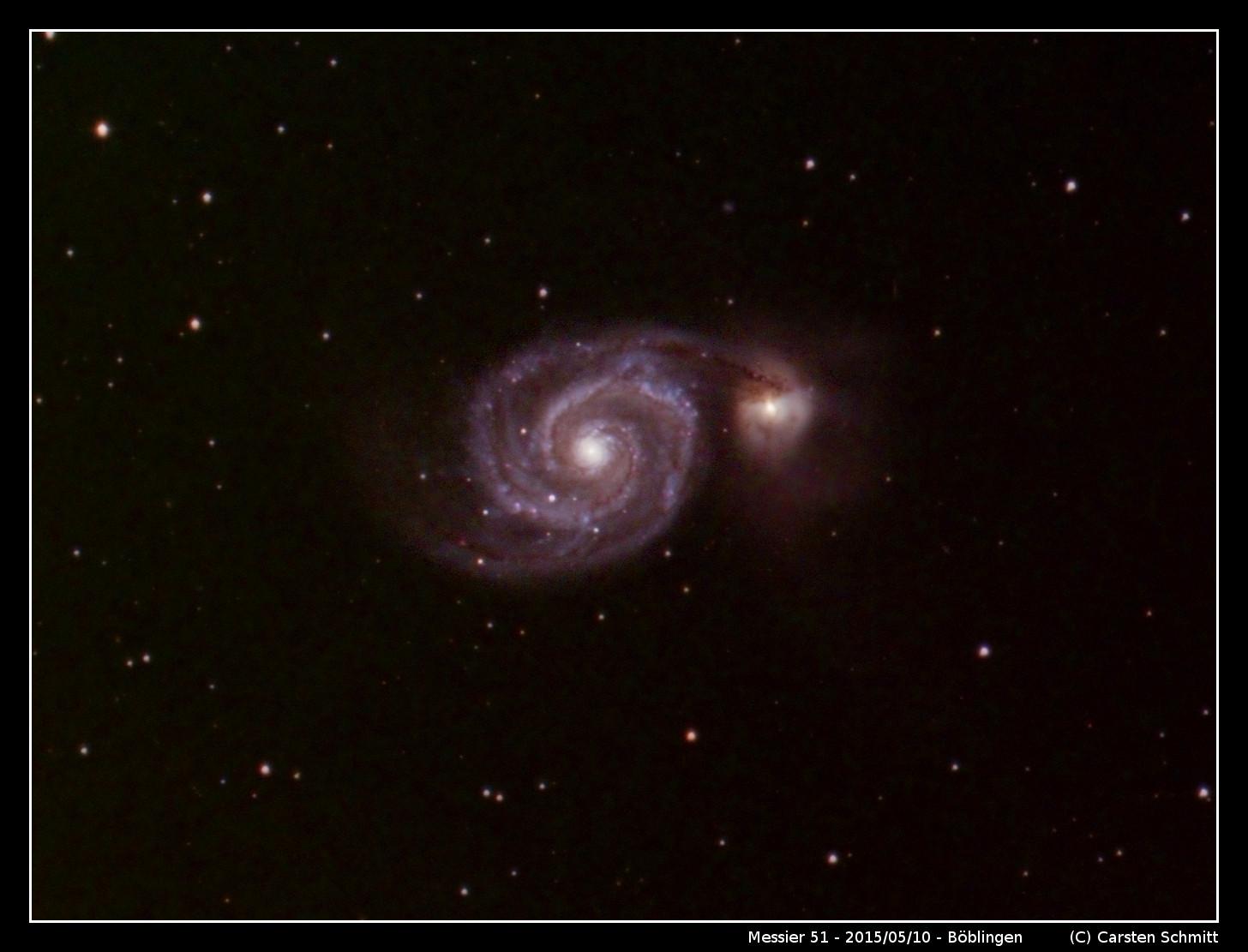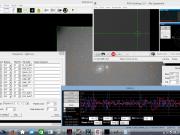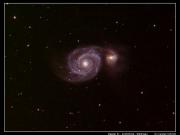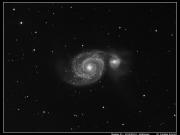vdB 126 is a reflection nebula in constellation Vulpecula. To me it looks like a black claw with at least 4 fingers.
I like the many stars in this region! In this clear night I was able to get 8 good IR frames before the moon rose. For stacking I used DeepSkyStacker 3.3.2 with Kappa-Sigma Clipping. The picture is also available in full resolution here. Finally, I decided to put it into my My Top Astro-Pics gallery.
 | Date | 2015/07/08 |
 | Location | Böblingen / Germany |
 | Object | vdB126 (Reflection nebula) |
 | Camera | Atik383L+ |
 | Guiding | yes, QHY5-II Mono via OAG |
 | Telescope | 8 |
 | Barlow lens | none |
 | Mount | EQ6Syntrek |
 | Cooling | -15°C |
 | Luminance | 8x, 600s, bin: 1x1 |
 | Red | 7x, 150s, bin: 2x2 |
 | Green | 7x, 150s, bin: 2x2 |
 | Blue | 7x, 150s, bin: 2x2 |
 | Dark | 10x |
 | Flat | 10x |
 | Total exposure | ~2h12min. |
Clear skies!
Last updated: June 16, 2022 at 23:33 pm




























